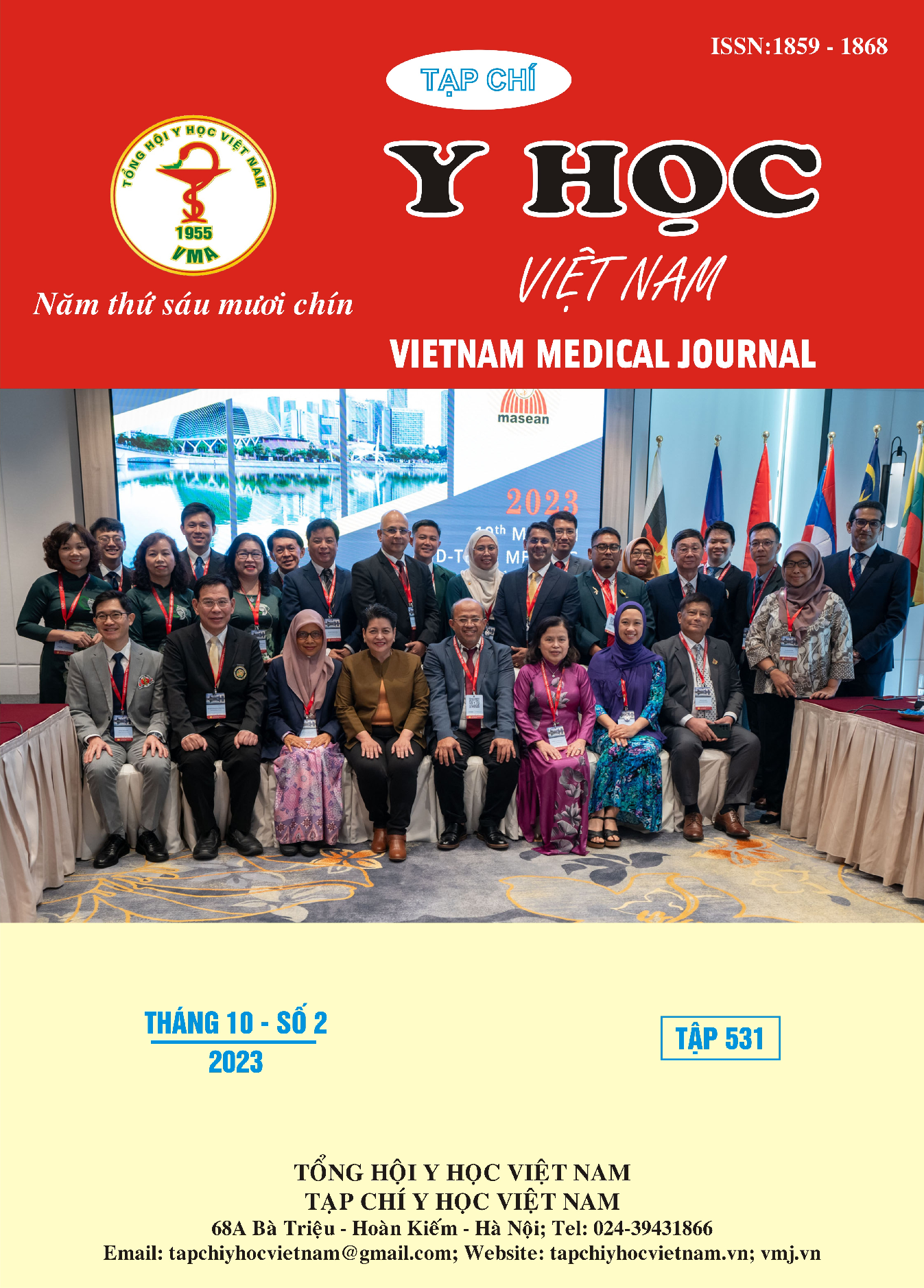THE FIRST CASE DETECTED IN VIETNAM: ANHYDRAMNIOS FETUS CAUSED BY ACE GENE MUTATION
Main Article Content
Abstract
Autosomal recessive renal tubular dysgenesis (ARRTD) is a rare genetic disorder with a very high mortality rate. The typical symptoms of the disease during pregnancy are oligohydramnios, anhydramnios, and nearly all affected fetuses die after birth or have a stillbirth in late gestation, which can adversely affect the mother. Worldwide, ACE gene variants associated with ARRTD have few studies, and in Vietnam they have not been reported. Oligohydramnios and anhydramnios in utero can be caused by ARRTD or many other genetic abnormalities. This condition makes it difficult to diagnose prenatal by amniocentesis and accurately identify fetal anomalies through ultrasound. In cases of kidneys and urinary tract abnormalities associated with oligohydramnios or anhydramnios, amnioinfusion into the amniotic sac and taking a sample of amniotic fluid can be performed for genetic diagnosis. We report a case of a fetus with anhydramnios and invisible urinary bladder, carrying a homozygous ACE variant NM_000789.4 (ACE), c.2503G>T (p.Glu853Ter), classified as "Pathogenic" by ACMG, related to ARRTD. The fetus inherited two alleles from heterozygous parents. The prognosis was poor, and the pregnancy was terminated. Pregnant counseling was offered for subsequent pregnancies, including options to avoid having a child with the disease, such as preimplantation genetic diagnosis or prenatal diagnosis by chorionic villus sampling or amniocentesis.
Article Details
Keywords
Anhydramnios; autosomal recessive renal tubular dysgenesis (ARRTD); ACE gene; prenatal diagnosis; genetic counseling.
References
2. Ariel I, Wells TR, Landing BH, Sagi M, Bar-Oz B, Ron N, et al. Familial renal tubular dysgenesis: a disorder not isolated to proximal convoluted tubules. Pediatr Pathol Lab Med. 1995;15(6):915-22.
3. Bacchetta J, Dijoud F, Bouvier R, Putet G, Gubler MC, Cochat P. [Renal tubular dysgenesis and mutation in the renin gene]. Arch Pediatr. 2007;14(9):1084-7.
4. Gribouval O, Moriniere V, Pawtowski A, Arrondel C, Sallinen SL, Saloranta C, et al. Spectrum of mutations in the renin-angiotensin system genes in autosomal recessive renal tubular dysgenesis. Hum Mutat. 2012;33(2):316-26.
5. Gribouval O, Gonzales M, Neuhaus T, Aziza J, Bieth E, Laurent N, et al. Mutations in genes in the renin-angiotensin system are associated with autosomal recessive renal tubular dysgenesis. Nat Genet. 2005;37(9):964-8.
6. Quetel TA, Mejides AA, Salman FA, Torres-Rodriguez MM. Amnioinfusion: an aid in the ultrasonographic evaluation of severe oligohydramnios in pregnancy. Am J Obstet Gynecol. 1992;167(2):333-6.
7. Palo P, Erkkola R, Piiroinen O, Pirhonen J. Diagnostic transabdominal amnioinfusion in a case of anhydramnion and fetal kidney dysplasia. Ann Chir Gynaecol Suppl. 1994;208:94-7.
8. Richards S, Aziz N, Bale S, Bick D, Das S, Gastier-Foster J, et al. Standards and guidelines for the interpretation of sequence variants: a joint consensus recommendation of the American College of Medical Genetics and Genomics and the Association for Molecular Pathology. Genet Med. 2015;17(5):405-24.


